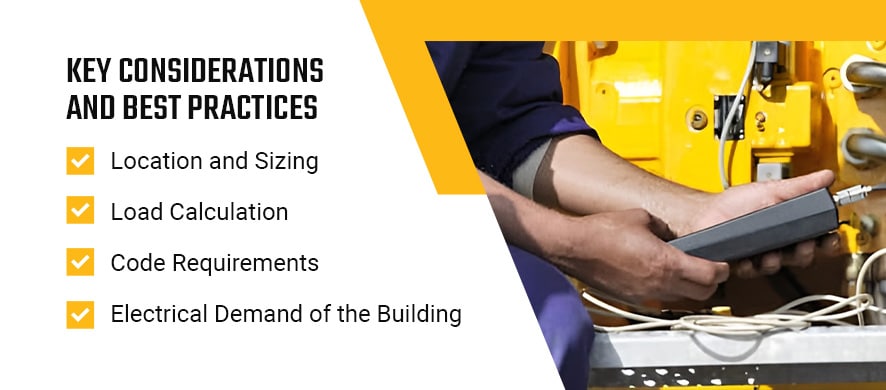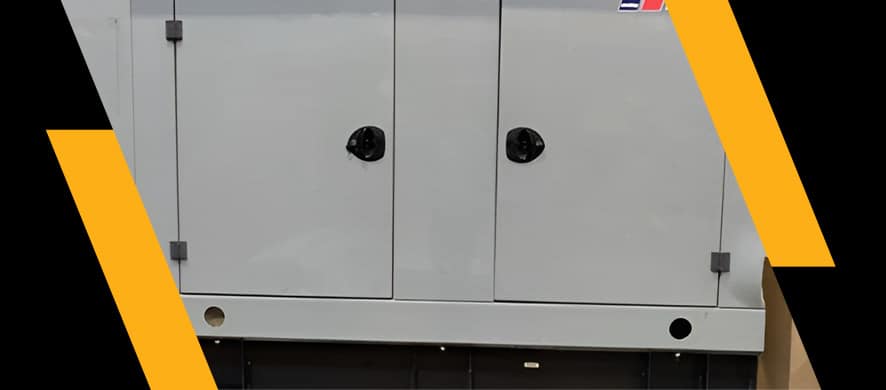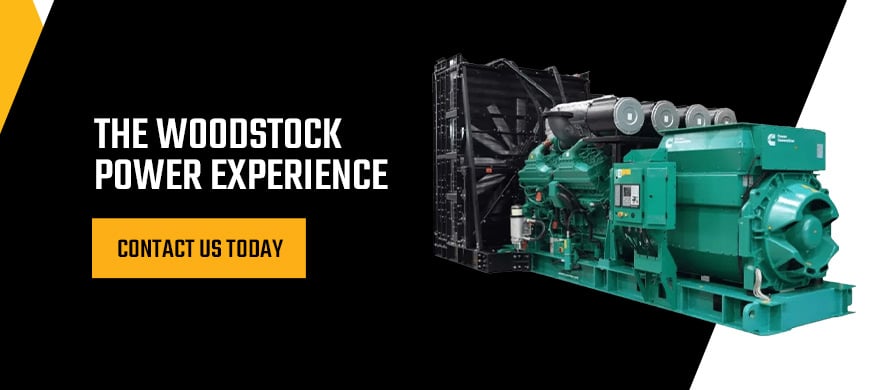A Guide to Commercial Electrical Panels
Whether you are a construction or property manager, a stakeholder involved in new commercial constructions or manage a commercial business, your electrical system is vital to the functionality and safety of the entire building. Specifically, the electrical panels serve as the focal point of the entire system, ensuring generators support the electrical requirements of your building.
Common Types of Commercial Electrical Panels
When it comes to commercial systems, there are two main types of electrical panels that work with generators. While both use alternating current (AC) and contain power cycles, there are some differences between the two.
- Single-phase electrical panel: Just like its name suggests, a single-phase electrical panel relies on a single conductor wire to provide power output. This makes it ideal for smaller buildings that don’t have a lot of power needs. The AC flow ranges from 170 volts to negative 170 volts, with a continuous oscillating wave reaching a peak and then dipping down.
- 3-phase electrical panel: Meanwhile, the 3-phase electrical panel is designed to support the electricity needs of larger buildings. It contains three wires, which are all synchronized and offset by 120 degrees. This allows it to reach its peak at any time, delivering even and continuous power for heavy-duty applications.
Key Components of Commercial Electrical Panels
While commercial electrical panels can vary, they usually contain a few standard features. The key components to pay attention to include:
- Electrical panel sizes: Depending on your building’s power needs, electrical panel sizes can vary. Panel sizes are measured in amps, which indicates the electrical capacity that the panel is capable of handling.
- Number of circuit slots: Different branch circuits will require different numbers of circuit slots, which is why there is often a range of slots available.
- Safety features: Once you’ve determined the specific type of circuit breaker panels you need, you can start considering features. In order to keep the electrical panel safe, additional safety features are included to safeguard the system if a breaker trips.
Meanwhile, components of the panel board could generally include:
- Bus bars: The bus bars, which are conductive, serve to distribute the electricity to the branch circuits.
- Lug panel: The lug panels, or main breaker, connect the cables directly and help control the power to secondary areas.
- Grounding wires: The grounding wires are specially designed to protect against electrical faults by offering a direct path to the earth.
Overall, one of the most notable comments is the commercial circuit breaker and panel board. While there are different breaker box sizes, the purpose is the same — to prevent overload by stopping the flow of electricity. The circuit breaker ensures that no dangerous electrical surges occur, which would negatively impact the wiring and equipment connected to it as well as the safety of your building.
The main components found in a circuit breaker include a sensing mechanism and tripping mechanism. In some setups, an Automatic Transfer Switch (ATS for short) may be installed in certain situations. Basically, Automatic Transfer Switches prompt backup generators to run when loss of power from the main utility grid is detected by switching to the backup power system and prompts the generator to turn off and switch back to the main utility when power is restored. Specifically, the ATS works by monitoring the electrical parameters in both the primary and alternate power sources. While service entrance rated (SER) serves essentially the same purpose, it allows the building to be manually disconnected and serves as the primary point of disconnect between the building and utility power.
With an appropriate electrical circuit build-out, commercial buildings can be specifically set up to accept generator power and keep all electrical components safe during a ground fault, short circuit or overload.
Key Considerations and Best Practices

When it comes to choosing a commercial electrical panel, there are a few considerations and best practices you want to keep in mind when deciding which would work best for your business. This includes:
Location and Sizing
One of the first factors to understand when it comes to the load requirements of your building is where you will be using it. The location and size of the space will determine which would work best. This is important to keep in mind because environmental factors like temperature and humidity can all impact how well it works and what kind of enclosure you will need. Overall, your panel size should correlate to the available space in your electrical room.
Load Calculation
Another important factor to consider is the load calculation, which is the overall electrical load requirements of your building. If you skip this important step, you can risk overloading the generator. Generators can only handle a certain load before they overheat, cause damage to whatever it is you’re trying to power or even start a fire in your building.
Before powering multiple items, you need to know the maximum amount of electrical load that the circuit breaker can safely support. This amount can vary depending on factors ranging from the number of connected devices to the expected power demand.
Code Requirements
Depending on where your building is located, you will likely have different building codes and regulations that you’ll need to comply with. These requirements may specify anything from the type of circuit breaker you can use to the installation process you’ll need to follow. Being aware of your area’s code requirements ensures your building stays safe while the system is in use and you remain in compliance.
Electrical Demand of the Building
Be sure to factor in the overall electrical demand of the building as well. Compared to residential spaces, commercial buildings will have a much higher power requirement. To support the higher power demands, commercial panels often use a 3-phase power supply, which operates at higher voltages. When the electrical demand meets the building specifications, it will be able to easily support the electrical load.
The Woodstock Power Experience
Once you’ve determined which type of commercial electrical panel would work best for your project, we invite you to discover the Woodstock Power experience. Since we were founded, we’ve specialized in buying, selling and financing new and used commercial generators. We carry diesel and natural gas generators, ranging from 50 kW to 4000 kW, to ensure you have access to the exact solutions you need.
Here at Woodstock Power, we can handle any size project involving industrial and commercial power generators as well as provide installation of control panels for generators. While we are headquartered in Philadelphia, Pennsylvania, we operate globally, serving as your trusted partner in selling and buying used power equipment — no matter where you’re located.
As the most powerful brand in the industry, you can count on us to consistently deliver top-quality solutions for all your critical power installations while providing full-service support every step of the way. We have the capability to ship our equipment fast with no lead times so you can keep your business running at peak performance.
To learn more about how we can meet your specific application needs and provide you with peace of mind for your critical power installations, give us a call at 610-658-3242 or reach out online today.



